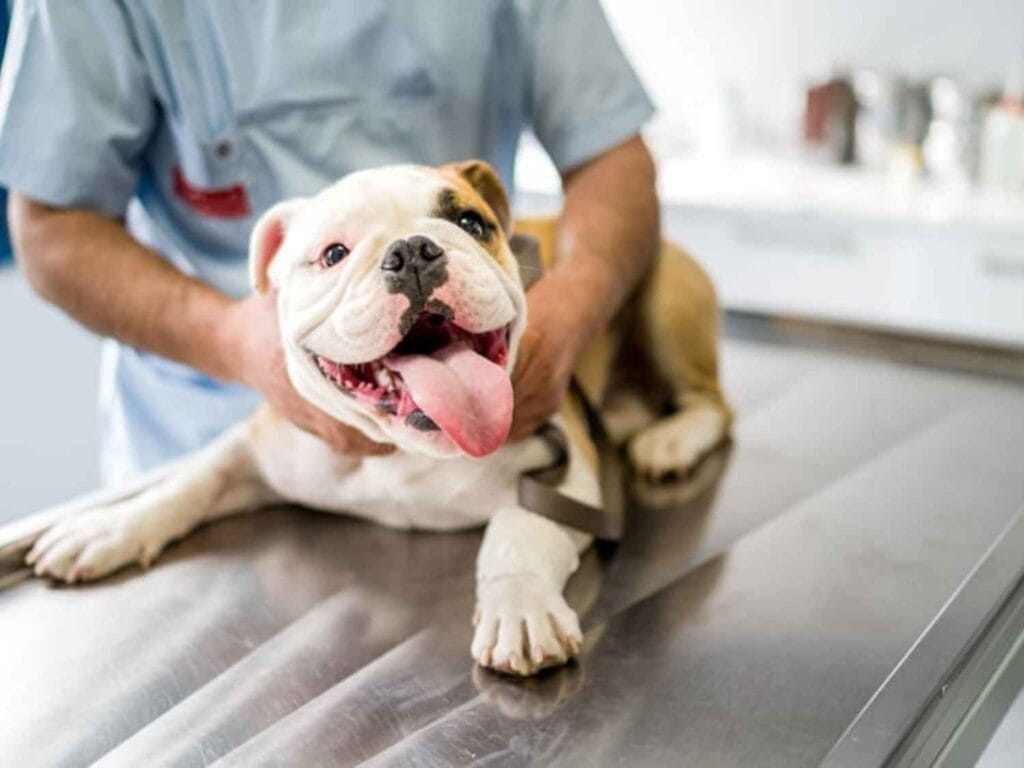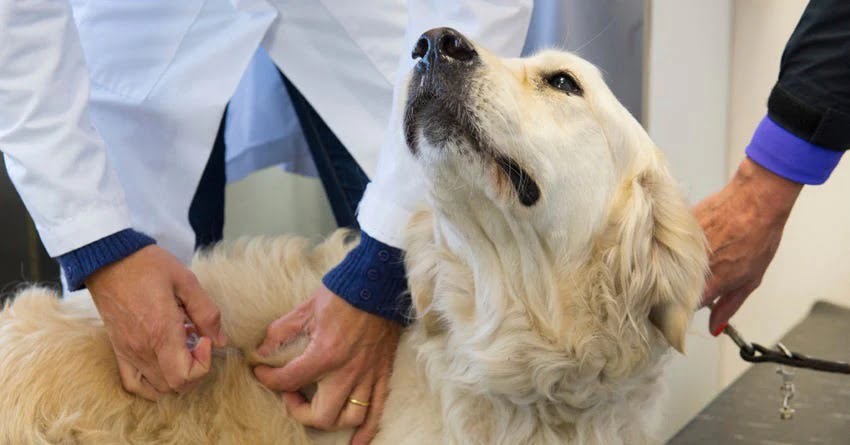Now Reading: Canine Distemper
- 01
Canine Distemper

Canine Distemper
Feeling emotionally connected to your pets is completely natural, and witnessing them affected by this Canine Distemper infection can be distressing. However, there’s no need to panic. We’re here to support you and guide you through this challenging time, helping you overcome this difficult situation.
What is Canine Distemper?
Canine distemper is a highly contagious and potentially deadly virus that affects dogs. It is a member of the paramyxovirus family and is caused by the canine distemper virus (CDV). This virus attacks the respiratory, gastrointestinal, and nervous systems of infected dogs. This can lead to a wide range of symptoms, including fever, coughing, vomiting, diarrhea, and seizures.

Is It a Transmissible Disease?
Can humans get canine distemper? The virus is spread through the air, and it can also be transmitted through contact with infected bodily fluids, such as saliva, nasal secretions, and feces. It is highly contagious and can be transmitted from one dog to another through close contact or shared spaces, such as kennels or shelters.
Note: Puppies and young dogs are most at risk of contracting distemper because they have not yet developed immunity to the virus.
Canine Distemper Symptoms
The canine distemper symptoms usually appear one to three weeks after infection. The most common symptoms include:
- High Fever
- Discharge from the eyes and nose
- Persistent, dry cough
- Loss of appetite
- Vomiting and diarrhea
- Neurological symptoms such as tremors, seizures, and paralysis.
If your dog is showing any of these symptoms, it is important to take them to the veterinarian as soon as possible for an evaluation. Canine distemper can be serious and can be fatal in some cases, so prompt treatment is essential.
Is Canine Distemper A Curable Disease?
It is a viral disease that affects dogs and other carnivores. There is no specific treatment for distemper, and the virus is usually treated with supportive care. This may include providing fluids and electrolytes to help prevent dehydration and malnutrition, administering medications to control vomiting and diarrhea, and providing antibiotics to prevent secondary infections. In severe cases, hospitalization may be required. Here are certain general treatments for this deadly disease:
Fluid Therapy:
Patients often become dehydrated due to vomiting and diarrhea. Providing fluids through intravenous (IV) or subcutaneous (SQ) injections can help prevent dehydration and support the body during the illness.
Antibiotics For Secondary Infections:
This viral disease can cause secondary infections, such as pneumonia, that may require treatment through antibiotics.
Nutritional support:
Dogs with canine distemper may have a decreased appetite or refuse to eat altogether. Providing nutritional support through feeding tubes or other methods can help ensure the availability of the nutrients needed during the illness.
Anti-emetic and Anti-diarrheal Medication:
Your dogs may experience vomiting and diarrhea, leading to dehydration and other complications. Medications can help control these symptoms and prevent further complications.
Neurological symptoms Management:
Neurological signs can be cured effectively through medications to control seizures. Physical therapy can help regain muscle strength and mobility.
It is essential to work closely with your veterinarian to determine the best treatment plan for your dog. Canine distemper can be serious and can be fatal in some cases, so prompt treatment is essential. With proper care and treatment, many patients can recover from canine distemper. However, it should be remembered that some pets may have long-term effects from the illness, such as neurological problems or vision loss.
How Can We Prevent Canine Distemper?
- Vaccination
The best way to protect against this virus is the canine distemper vaccine for your dog. Most puppies should receive their first canine distemper vaccine at six to eight weeks, with booster shots every three to four weeks until they are at least 16 weeks old. Adult dogs should also receive booster shots to maintain their immunity to the virus. It is important to follow the vaccination schedule suggested by your veterinarian to ensure your dog is fully protected against distemper.
- Hygienic Measures
In addition to vaccination, there are other steps you can take to help prevent the spread of distemper. These include washing your hands thoroughly after handling any potentially contaminated objects, such as food and water bowls or bedding, and cleaning up any feces immediately to reduce the risk of contamination.
- Avoid Exposure
It is also essential to keep your dog away from areas where infected dogs may have been and to avoid letting your pet come into contact with unfamiliar dogs.
- Keep an Eye on Symptoms
If you suspect your dog showing canine distemper symptoms, it is important to seek veterinary care as soon as possible. Early detection and treatment can increase the chances of a full recovery. It is also essential to follow your veterinarian’s instructions for caring for your dog at home to help prevent the spread of the virus to other dogs.
Summing Up:
In conclusion, canine distemper is a serious and potentially deadly virus that affects dogs. It is highly contagious and can be transmitted through the air and contact with infected bodily fluids. Puppies and young dogs are most at risk of contracting distemper, but adult dogs that have not been vaccinated may also be at risk. The best way to protect against distemper is to get your dog vaccinated and follow good hygiene practices to reduce the risk of contamination. If you suspect your pet showing any of the distemper symptoms, it is important to seek veterinary care as soon as possible.
Frequently Asked Questions:
- Can humans get Canine Distemper?
No, humans cannot get canine distemper. It is a viral disease that affects dogs, ferrets, and certain wildlife species, but it does not infect humans.
- How is canine distemper diagnosed?
Diagnosis of distemper is typically based on the dog’s clinical signs, medical history, and test results. A veterinarian may perform blood tests, a polymerase chain reaction (PCR) test, or a viral culture to confirm the presence of the virus.
- What is the Canine Distemper Vaccine?
A distemper shot for dogs, commonly known as the distemper vaccine, is a vaccination designed to protect dogs against canine distemper virus (CDV). The vaccine is usually administered as part of a combination vaccine called the DHPP or DAPP vaccine, which also protects against other diseases such as parvovirus, adenovirus, and parainfluenza. The distemper vaccine is a crucial part of a dog’s vaccination schedule and helps prevent serious illness and potential fatalities from canine distemper virus.
- How is Canine Distemper spread?
Canine distemper is primarily spread through airborne exposure to respiratory secretions from infected animals. It spreads through contact with contaminated objects, such as food, water bowls, and bedding. It can also spread through surfaces that an infected animal has come into contact with. Additionally, the virus can be shed in bodily fluids like urine and feces, contributing to its spread.
- What is the prognosis for dogs with distemper?
The prognosis for dogs with distemper varies depending on the severity of the disease, as well as the overall health and age of the dog. Some dogs may recover with treatment, while others may die or require euthanasia if the disease progresses to severe neurological symptoms.










